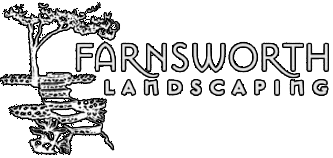
Sustainable Landscaping
Matthew is finding more and more that his clients want a landscape that is healthy for the environment and their family too.
Sustainable Landscaping is a WAY of thinking about a project and he loves educating his clients on the elegance of the natural systems all around us. This is why we live in Marin - we are proud to have increased bio-diversity and restored eco-systems with our sustainable landscapes.
The San Francisco Bay Area is one of the most environmentally conscious regions in the United States. More and more residential homeowners, as well as commercial properties, are looking to reduce their ecological footprint as a way to promote sustainability, conserve resources, and save money.
What is Sustainable Landscaping?
Sustainable landscaping, otherwise known as eco-friendly landscaping, is landscaping that minimizes the ecological footprint of your landscape garden. Some of the practices incorporated into eco landscaping include the use of native plants, drought-resistant plants, or the installation of edible landscapes and permaculture gardens, which can also serve to reduce your food bill. Sustainable landscaping takes into account water use minimization, either through efficient irrigation, rainwater harvesting techniques, or the installation of greywater systems. The use of reclaimed or recycled materials, especially in hardscape installation is also an important factor in sustainable landscaping. Organic soils and non-chemical fertilizers also come into play with eco-friendly landscaping practices.
Sustainable Landscaping Practices
At Farnsworth Landscaping, we work with homeowners and commercial businesses to create beauty and function, while maintaining a low ecological footprint. We select plant palettes that not only create beauty but also attract beneficial insects while providing valuable, regenerative nutrients to the soil. We supplement our soil with organic fertilizers, instead of chemical fertilizers. Non-chemical fertilizers include ground glacial rock dust which is full of magnesium, iron, and other trace minerals; kelp meal; "green sand", which comes from ancient peat bogs; bird & bat guanos, and more.
Native Gardens
We create Bay Area Native Gardens. Included in the diverse palette of native plants available are plants that have naturalized over the period of a century. Native plants that you would typically see on a hike in Bay Area coastal areas, or California inland areas. Most native plants are drought resistant - they don't require excess water beyond 1-2 seasons. Some examples include Monkey Flower, California poppy, Indian Paintbrush, Sedum succulents, and Rock Rose.
Lawn Conversions
Lawn conversion helps save water and fertilizer. Lawns are in fact, not ecologically sound for most ecosystems. In some locales, it is possible to get a rebate for residential lawn conversion. Some lawn conversion options include replacing grass with drought-tolerant, native plants and food gardens.
Water Conservation
We can install high-tech irrigation systems that leverage satellite systems that monitor weather patterns, which can beam information to your system so that it automatically adjusts the irrigation clock. This can be patched to your PC, so you can control your irrigation system remotely. On a more economical scale, we can install a water catchment system to harvest rainwater for landscape irrigation. We also build greywater systems that utilize water from bathrooms and kitchens. This water will run through a filtration system and then be used to irrigate non-edible landscapes.
